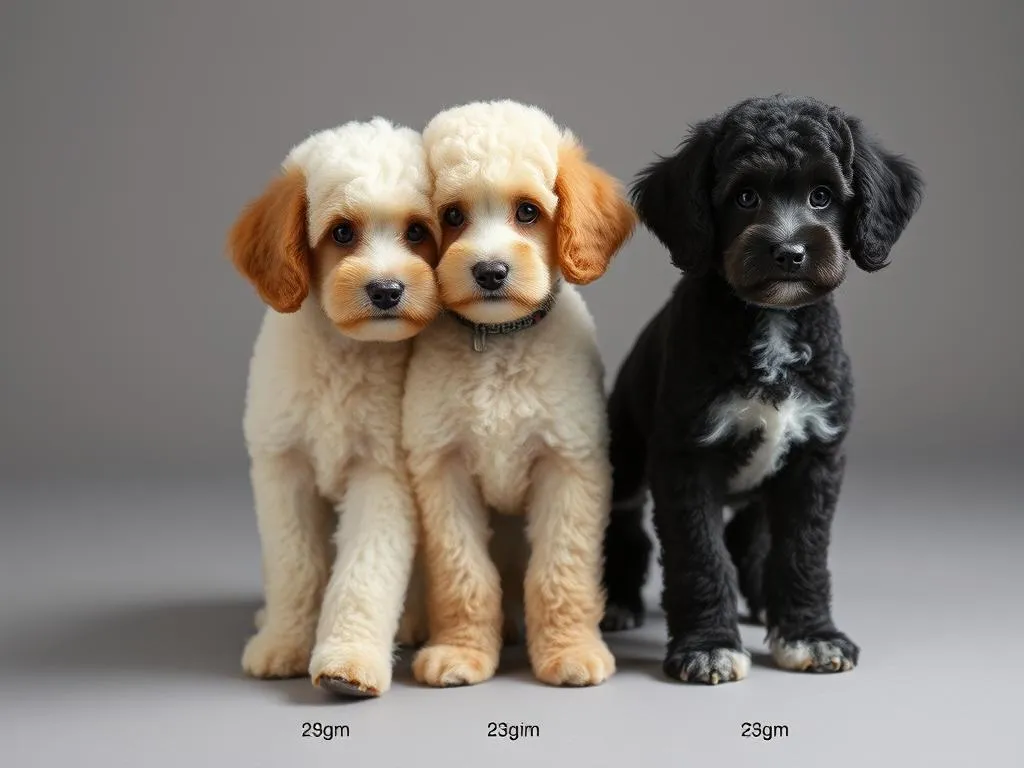
Introduction
Mini Poodles are a fascinating breed, known for their intelligence, elegance, and playful disposition. They have a rich history that dates back to their origins as water retrievers in Germany and France. This breed’s characteristics such as curly coats, alert expressions, and friendly demeanor make them popular among dog lovers. Understanding the size, weight, and growth patterns of Mini Poodles is essential for potential and current owners alike.
This article aims to provide valuable insights into how big Mini Poodles get, discussing their size, weight, and a comprehensive growth chart. By understanding these factors, owners can make informed decisions regarding their Mini Poodle’s health care, ensuring a happy and healthy life for their furry companions.
Understanding Mini Poodles
Breed Characteristics
Mini Poodles are one of three varieties of Poodles, alongside the Standard and Toy Poodles. They typically stand between 12 to 15 inches tall at the shoulder and weigh between 10 to 15 pounds. Mini Poodles are known for their hypoallergenic coats, which require regular grooming. Their intelligence is unparalleled, making them highly trainable and eager to please.
When compared to Standard and Toy Poodles, Mini Poodles strike a balance between size and temperament. Standard Poodles are larger and typically more active, while Toy Poodles are smaller and may have a more delicate personality. Mini Poodles combine the best of both worlds, offering a manageable size with an engaging personality.
Importance of Size and Weight
Understanding the size and weight of Mini Poodles is crucial for maintaining their health. A dog’s size can significantly impact its overall health, including its risk for certain conditions and its dietary needs. There are common misconceptions about Mini Poodles, such as the belief that they are just smaller versions of Standard Poodles. In reality, they have unique characteristics that require tailored care.
Size and Weight of Mini Poodles
Average Size Range
When discussing how big Mini Poodles get, it’s essential to refer to their average size range. Most Mini Poodles stand between 12 to 15 inches in height and weigh between 10 to 15 pounds. This size allows them to be versatile companions, suitable for various living conditions, including apartments and houses.
Factors Influencing Size
Several factors influence the size and weight of Mini Poodles:
- Genetics and Breeding: The lineage and breeding practices can impact the size of a Mini Poodle. Responsible breeders aim for specific characteristics, including size, so it’s important to choose a reputable source.
- Nutrition and Diet: A well-balanced diet is key to a Mini Poodle’s growth. Poor nutrition can lead to stunted growth or obesity, which can further complicate health issues.
- Environmental Influences: The living environment and lifestyle also play a role. Active environments can promote healthier growth, while sedentary lifestyles may hinder it.
Growth Chart for Mini Poodles
Typical Growth Stages
Mini Poodles go through distinct growth stages:
- Puppy Stage (0-6 Months): During this stage, Mini Poodles experience rapid growth. They are typically playful and require a lot of socialization and training.
- Adolescent Stage (6-12 Months): Growth begins to slow down, and Mini Poodles may start to show independence. This is a crucial time for training and establishing boundaries.
- Adult Stage (1 Year and Older): By one year, most Mini Poodles have reached their full height and weight. However, they may still fill out and gain muscle mass.
Sample Growth Chart
Below is a sample growth chart for Mini Poodles, representing typical height and weight milestones:
| Age (Months) | Height (Inches) | Weight (Pounds) |
|---|---|---|
| 0-2 | 6-10 | 1-4 |
| 3-6 | 10-12 | 4-8 |
| 7-12 | 12-15 | 8-15 |
| 12+ | 12-15 | 10-15 |
This chart provides a visual representation of expected growth. It’s important to remember that individual growth can vary based on genetics, nutrition, and overall health.
Health Considerations Related to Size and Weight
Common Health Issues in Mini Poodles
While Mini Poodles are generally healthy, they can be prone to specific health issues related to their size and genetics:
- Hip Dysplasia: A condition where the hip joint doesn’t fit snugly into the hip socket, leading to arthritis.
- Eye Disorders: Mini Poodles can be susceptible to conditions like cataracts and progressive retinal atrophy.
- Skin Conditions: Their curly coats can trap moisture and lead to skin infections if not groomed properly.
Preventative Measures
To ensure the health of your Mini Poodle, consider the following preventative measures:
- Regular Vet Check-Ups: Routine veterinary visits can catch potential health issues early on.
- Importance of a Balanced Diet: Providing a high-quality, balanced diet is crucial for maintaining their health and weight.
- Exercise Requirements: Mini Poodles require regular exercise to maintain a healthy weight and to stimulate their minds.
Caring for Mini Poodles as They Grow
Nutrition and Diet
Providing the right nutrition is vital for Mini Poodles. Here are some recommendations:
- Recommended Food Types: Look for high-quality dog food specifically formulated for small breeds. It should contain a good balance of proteins, fats, and carbohydrates.
- Portion Control: Adjust portions based on age and size. Puppies require more frequent meals, while adults can thrive on two meals a day.
Exercise and Socialization
Mini Poodles are energetic and require daily exercise. Here are some tips:
- Daily Exercise: Aim for at least 30 minutes of exercise per day, which can include walks, playtime, or agility training.
- Socialization: Early socialization with other dogs and people is crucial for well-rounded behavior. Consider puppy classes or dog parks for exposure.
Grooming Needs
Mini Poodles have specific grooming needs that require attention:
- Coat Care: Their curly coats need regular brushing to prevent matting. Professional grooming every 4 to 6 weeks is typically recommended.
- Grooming Schedule: Establish a grooming routine at home, including brushing, bathing, and nail trimming.
Monitoring Growth and Development
Tracking Growth Patterns
Monitoring your Mini Poodle’s growth is essential for their overall health:
- How to Measure Height and Weight at Home: Use a measuring tape for height and a scale for weight. Regularly track these measurements to monitor growth.
- Keeping a Growth Log: Document changes in size and weight over time, allowing you to spot trends and potential health issues.
When to Consult a Veterinarian
Being vigilant about your Mini Poodle’s growth can prevent potential health problems:
- Signs of Underweight or Overweight Issues: If your Mini Poodle appears too thin or overweight, consult your veterinarian for guidance.
- Growth Abnormalities to Watch For: Sudden changes in growth patterns or size can indicate underlying health issues and should be addressed promptly.
Conclusion
In summary, understanding how big Mini Poodles get is essential for their health and well-being. Their average size and weight, along with growth patterns, play a crucial role in their overall care. By being informed about potential health issues and maintaining a balanced diet, regular exercise, and proper grooming, Mini Poodle owners can ensure their pets live happy, healthy lives. Responsible ownership and proactive health care will allow you to enjoy a fulfilling relationship with your Mini Poodle for years to come.









